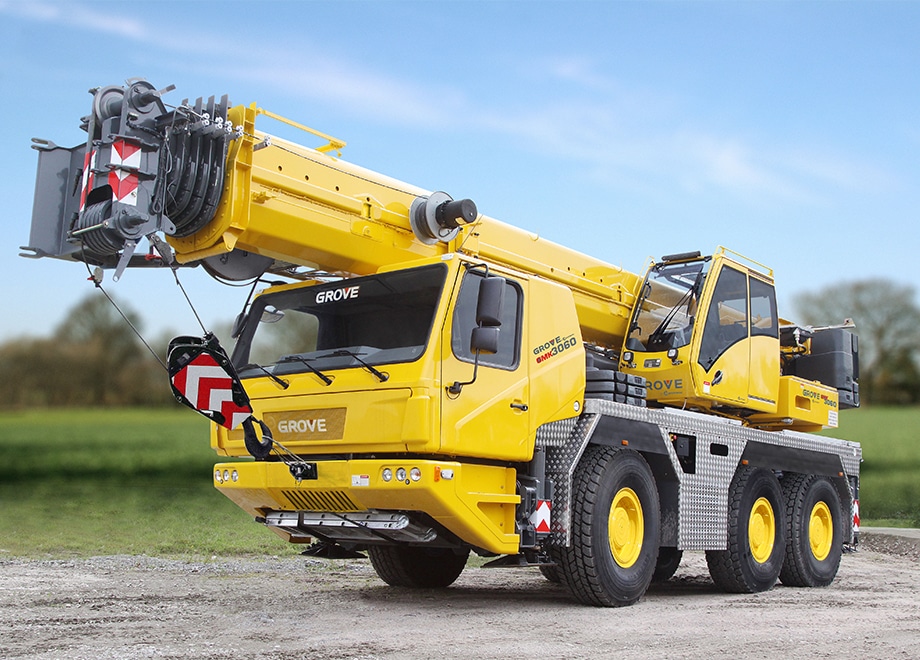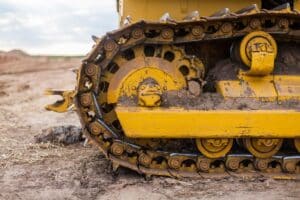Choosing the Best Mobile Crane for Your Construction Project

Mobile cranes are an indispensable part of Australia’s construction industry, playing a critical role in lifting and moving heavy materials across diverse project sites. From towering skyscrapers in Sydney to rural bridge construction projects in Western Australia, mobile cranes are the backbone of many essential operations.
Selecting the right crane is not just about getting the job done; it directly impacts the efficiency, safety, and overall cost-effectiveness of your project. Given Australia’s varied terrain and unique regulatory landscape, making an informed choice is essential.
This article is a comprehensive guide to help construction professionals in Australia navigate the process of choosing the best mobile crane for their needs. By understanding the various types of mobile cranes, assessing project requirements, and considering key factors, you’ll be better equipped to make a decision that ensures success.
Understanding Mobile Cranes
Mobile cranes are versatile machines designed for lifting and transporting heavy loads. Unlike fixed cranes, they are mounted on mobile platforms, making them easy to transport and set up at different sites.
Common types of mobile cranes include all-terrain cranes, rough terrain cranes, truck-mounted cranes, and crawler cranes. Each type offers distinct advantages, allowing operators to tackle a wide range of construction challenges.
All-terrain cranes are known for their adaptability, capable of handling both paved roads and rugged landscapes. Rough terrain cranes, on the other hand, are specifically built for off-road conditions, featuring four-wheel drive and stabilisers for enhanced balance.
Truck-mounted cranes are prized for their transportability, as they can easily travel on highways, while crawler cranes provide unmatched stability on soft ground thanks to their tracked undercarriage.
The key advantage of mobile cranes lies in their flexibility. They can be set up quickly, reducing downtime and costs. Compared to other lifting equipment, such as tower cranes, mobile cranes offer greater manoeuvrability and are often the preferred choice for short-term projects or sites with limited space.
Assessing Your Project Needs
Every construction project is unique, and understanding your specific requirements is the first step in selecting the right crane. Start by evaluating the scope of your project.
Consider factors such as the size of the site, the duration of the project, and the materials that need to be lifted. For instance, a high-rise construction project in Melbourne may require a crane with significant lifting height, while a warehouse installation in Perth might focus more on load capacity.
The terrain and site conditions also play a crucial role. Urban sites often have space constraints and require cranes with excellent manoeuvrability, whereas remote locations might demand rough terrain cranes capable of navigating uneven ground. Ground stability is another consideration, as certain cranes, like crawler cranes, are better suited for soft or unstable surfaces.
Finally, it’s essential to account for regulatory compliance. Australia has strict construction and safety standards, and your crane must meet all legal requirements for the project site. Ensure you understand local regulations, including permits and zoning laws, to avoid potential delays or penalties.
Key Factors to Consider When Choosing a Mobile Crane
Load Capacity
The lifting capacity of a crane is a critical factor. Understanding the weight of the heaviest loads you’ll be handling ensures you choose a crane capable of the task. Many operators underestimate the importance of load charts, which detail a crane’s lifting capabilities under specific conditions. Familiarising yourself with these charts can prevent accidents and maximise efficiency.
Boom Length
The boom length determines how high and far the crane can reach. For projects involving tall buildings or extensive horizontal lifting, a crane with a longer boom is essential. Boom extensions and jibs can also enhance reach, making them worth considering.
Mobility and Manoeuvrability
Construction sites vary in size and layout, so it’s important to choose a crane that can navigate the space effectively. For tight urban sites, compact cranes with advanced steering systems are ideal, whereas larger, more open areas can accommodate bigger models.
Setup Time and Ease
Quick setup is a significant advantage of mobile cranes. Cranes that require minimal preparation time can reduce project delays and labour costs. Look for cranes with automatic levelling systems and hydraulic stabilisers to streamline the setup process.
Fuel Type and Efficiency
In Australia, there is growing emphasis on sustainability. Diesel-powered cranes are standard, but hybrid and electric options are becoming more popular due to their lower environmental impact. Consider your project’s energy needs and long-term sustainability goals when making your choice.

Comparing Different Types of Mobile Cranes
All-Terrain Cranes
All-terrain cranes are a versatile choice, capable of operating on both paved roads and rugged landscapes. They are ideal for projects that require frequent relocation or a mix of on-road and off-road work. However, their high cost may not be justified for smaller projects.
Rough Terrain Cranes
These cranes are built for challenging environments, featuring large tyres and stabilisers for uneven surfaces. They are a great choice for remote construction sites but are less suitable for projects requiring frequent travel on highways.
Truck-Mounted Cranes
Truck-mounted cranes combine mobility and functionality. Their ability to travel on roads without additional transport makes them a practical choice for urban projects, though they may lack the stability of crawler cranes on softer ground.
Crawler Cranes
Crawler cranes excel in heavy-duty applications, offering unmatched stability on soft or unstable terrain. They are ideal for large-scale infrastructure projects but are less portable and require more setup time.
Budget Considerations
Budgeting for a mobile crane involves more than just comparing rental or purchase prices. Renting a crane can be an attractive option for short-term or one-off projects, as it eliminates the need for significant upfront investment. Rental agreements in Australia often include maintenance and inspection services, providing added peace of mind. However, it’s important to account for additional expenses, such as delivery and setup fees, which can vary based on the type of crane and the project’s location.
For those who need cranes regularly, purchasing might make more sense in the long run, provided the cost of ownership—insurance, maintenance, and storage—is factored in.
Hidden costs can significantly impact your budget if overlooked. Permits for transporting cranes, especially for larger models, are mandatory in Australia and can add to your expenses.
Additionally, training operators or hiring skilled professionals can be a vital investment to ensure both safety and efficiency. By considering these factors and weighing the long-term benefits against immediate costs, you can select the most financially viable option for your project.
Safety and Compliance Requirements
Operating mobile cranes in Australia comes with strict regulatory requirements to ensure safety on construction sites. Work Health and Safety (WHS) laws mandate compliance with load limits, stabilisation protocols, and proper operation practices.
Selecting a crane with advanced safety features like load-monitoring systems, anti-collision technology, and stabilisers helps meet these requirements while reducing the likelihood of accidents.
Operator certification is another crucial compliance aspect. All crane operators must hold a valid high-risk work licence to operate legally in Australia. Regular inspections of the crane, both before and during the project, are essential to identify any potential faults. Partnering with reputable suppliers who provide well-maintained equipment can simplify compliance and contribute to a safer, more productive site.
Choosing the Right Crane Supplier or Hire Company
The choice of supplier or hire company can significantly influence the success of your project. Look for suppliers with a strong reputation for reliability, maintenance support, and transparent pricing.
Companies offering a range of cranes can help match the right equipment to your specific needs. It’s also helpful to check customer reviews and seek recommendations from industry peers to ensure you’re working with a trusted provider.
When evaluating a supplier, ask about their maintenance protocols and warranty policies. A good supplier should provide detailed service histories for their equipment and offer support in case of mechanical issues.
Ensuring they adhere to Australian safety standards and have robust customer service can make all the difference in a smooth, hassle-free project.
Tips for Maximising Crane Efficiency
Maximising efficiency starts with regular maintenance and inspections to keep the crane in top condition. Proper lubrication, load testing, and routine checks for wear and tear can help prevent costly breakdowns.
Additionally, using advanced technologies like telematics systems can provide real-time data on crane performance, enabling operators to optimise lifting operations and reduce fuel consumption.
Operator training is equally important for boosting efficiency. Skilled operators can navigate tight spaces, manage loads effectively, and minimise setup time. Investing in continued education and refresher courses can ensure operators stay updated on the latest industry practices and safety protocols, resulting in a more productive and safer work environment.
Case Studies
Learning from real-world examples can offer valuable insights into the importance of choosing the right crane. For instance, a major construction project in Brisbane successfully utilised an all-terrain crane to navigate a challenging urban environment with limited space. The crane’s manoeuvrability and advanced safety features enabled the team to complete the project on schedule and without incidents.
Conversely, poor crane selection can lead to costly delays and safety risks. A project in regional Victoria suffered setbacks when an undersized crane was unable to handle the required load, necessitating additional hires and time. These examples underscore the importance of carefully evaluating project needs and selecting equipment that meets both operational and safety standards.
Future Trends in Mobile Crane Technology
The future of mobile cranes in Australia is being shaped by advancements in technology, with hybrid and electric cranes leading the charge. These environmentally friendly options are becoming increasingly popular, particularly for projects in urban areas with strict emissions regulations. They offer not only reduced environmental impact but also potential savings in fuel costs over time.
Additionally, innovations like AI-assisted load monitoring and precision lifting systems are transforming crane operations. These technologies improve safety and efficiency, helping operators execute complex tasks with greater accuracy. As these advancements become more widely available, they promise to revolutionise the construction industry, making mobile cranes more adaptable to Australia’s diverse project needs.
Closing Thoughts
Choosing the best mobile crane for your construction project requires careful consideration of multiple factors. By understanding your project’s needs, exploring different crane types, and working with reliable suppliers, you can make a decision that ensures safety, efficiency, and success. For complex decisions, seeking professional advice can provide valuable insights and peace of mind.





